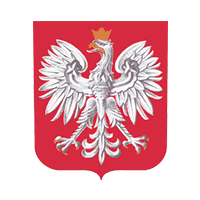Petr ČADA, Pavel DVOŘÁK, Česlav NASTULCZYK, Jiří GOLASOWSKI, Jiří KORBEL, Roman BIAŁAS, Michał FORTUNA
The article describes the experience with a trial run of coal seams exploitation by the room and pillar mining method in the Czech mine "DZ2" OKD, Inc. The described experiences are important in two respects. First, they show the ability to exploit protective shaft pillars effectively by the room and pillar method in the Upper Silesian Coal Basin. This is the first attempt to use this system in Europe, and the obtained results allow us to hope that it is not the last. The article shows also the Bolter Miner Joy 12CM30, which was used in the conditions of Upper Silesian Coal Basin for the first time. Another extremely important issue highlighted in the article is rockbolt support. Presented results of implementation of rockbolt support function in a deep coal mine in the Upper Silesian Coal Basin show that proper design, modern technologies for exploitation and bolting, workmanship and advanced monitoring techniques, are an opportunity for many mines in the Upper Silesian Coal Basin to reduce their costs of driving.
Sylwester RAJWA, Stanisław PRUSEK, Aleksander WRANA, Zbigniew RAWICKI
W artykule przedstawiono wyniki badań ankietowych wśród osób dozoru podziemnych zakładów górniczych wydobywających węgiel kamienny. Badania dotyczyły samooceny stanu faktycznego w wyrobiskach, w których dochodziło do niebezpiecznych zdarzeń związanych z utrzymaniem stropu. Analiza wyników może posłużyć jako narzędzie do odpowiednich działań zapobiegawczych przeciwdziałających niezamierzonym opadom stropu w drążonych wyrobiskach chodnikowych
Piotr KALISZ
The issue of the impact of subsoil deformations on above-ground heating pipelines, located within mining areas, was discussed. The heating pipelines are lied on supports and are constructed from steel pipes with thermal insulation. The expansion joints are mounted on these pipelines due to significant changes in temperature related to the transmission of heat energy and the resulting changes of their length. Subsoil deformations within mining areas cause the displacements of supports and thus pipelines are subjected to additional displacements, forces and bending moments. The heating pipelines are protected against the impact by the use of expansion joints with an increased operating range. In the article the way of evaluating the possibility of transferring mining deformations of the subsoil by above-ground heating pipelines was presented. Evaluation of the possibility should consider:
− assessment of the technical condition of heating pipeline construction and supports based on the field inventory data,
− assessment of the current ability to transfer subsoil deformation by pipeline compensators,
− kinematic analysis of extreme displacement values of supports resulting from the predicted values of subsoil deformation indicators,
− static strength analysis for the selected characteristic sections of the heating pipeline.
Jan KRZELOWSKI, Adam MAJ
This paper presents the status of blasting work safety between 1990 and 2015, complete with circumstances and causes of prominent safety events resulting in blasting explosive-related accidents at strip mines. The paper also discusses events of rock fragmentation zone overruns, which resulted in hazardous near-misses, where tragedy was avoided only owing to favourable circumstances, sometimes leading to damage of property. Actions were identified which have improved blasting safety of strip mine operations. An analysis was completed with constructive conclusions for the future of strip mine blasting, including: outsourcing of blasting work to professional contractors, maintaining the increasing trend for operations with mixer-loader produced explosives and non-electrical or electronic blast initiation, and systematic safety training for blasters and blasting supervisors.



